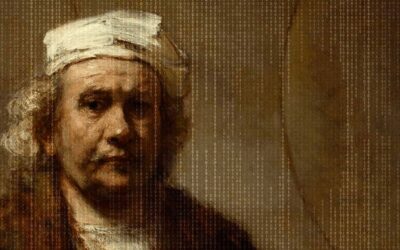Create a Start-to-Finish Process for Cataloging Objects in the Museum CMS

Rachael Cristine Woody
It is now time to draft your start-to-finish process for cataloging objects into the museum CMS, using everything you have tested from our previous posts in this series.
We began this miniseries with suggestions for how to get to know your new museum Collections Management System (CMS), how new data can be added to it, and how the data can be best captured based on the CMS.
First, the Fundamentals
To begin, let’s review the foundational pieces of knowledge required for successful process construction:
- Which best practices are we following?
- Where is the data going?
- How does the data get to where it’s going?
- Which method will we use to capture the data?
- Which approaches will we take to make discrete scopes of work?
Answer each of these prompts as the beginning portion of your process creation.
Now it’s time to think about the actual activities that take place from beginning to end of the cataloging process. Consider:
- How are objects selected for description? This is particularly important if the museum has a backlog of items and is not operating on a catalog on-demand as acquisitions come in.
- How many objects are selected at any one time?
- Who performs each aspect of the data gathering and cataloging?
- Which documents are used for data capture?
- Which data elements are required to be captured?
- How is the review process performed?
- How is the data transferred to the CMS, if not input directly?
Next, Document the Process
The next step in process creation is to put it to paper. Document your answers to each of the prompts above. This will serve as your outline. Then, fill in each area with a step-by-step account of which activities take place, where information can be found, how object data should be captured, etc. Be sure to add in details to resources that can be accessed, templates to use, and plenty of visual examples to accompany the text instructions.
Last, Put CMS Supports in Place
The last part is to put CMS supports in place. Many CMS options now come with some degree of template creation, workflow support, and task assignment. Review your CMS and implement the following functionality if it’s available to you:
- Templates for each record-type; begin with the object record.
- Pop-ups, default text, or other helpful notes that can provide additional detail about the field and the type of data that goes in that field.
- Workflows for each module; begin with the object module.
- Task assignment with notifications tied to specific user accounts (if you’re a multi-member team.
- Report templates or structures for data you regularly pull for assessments, exhibit planning, inventory, etc.
As museum CMS platforms evolve you will experience increases in intuitive functionality. Be sure to stay up to date with software developments, new functionality, trainings, etc. These tools are developed to help make your job easier, more efficient. So, there’s a good incentive to stay updated.
Conclusion
We’ve now completed our miniseries on what to do once you’ve implemented a new museum CMS. With specific focus on how to jump start your use of the system we’ve outlined areas to explore, including a deep dive on understanding how data can enter your new system, to how develop a data capture process. The good news is, the more you explore and learn about the system, the better it can serve you in your work.
Additional Reading
The following posts contain further detail on aspects of cataloging in the CMS and workflow construction:

Rachael Cristine Woody
Rachael Woody advises on museum strategies, digital museums, collections management, and grant writing for a wide variety of clients. She has authored several titles published by Lucidea Press, including Museum Digital Projects and You. Where to Begin? Rachael is a regular contributor to the Think Clearly blog and a popular presenter.
Never miss another post. Subscribe today!
Similar Posts
No-Code Digital Storytelling Example: Rembrandt’s Self-Portrait at Kenwood House
Explore how English Heritage’s Kenwood House uses the no-code platform Shorthand to bring Rembrandt’s Self-Portrait with Two Circles to life through visual storytelling and interactive design.
Exploring No-Code Digital Storytelling: Hoover’s “Fanning the Flames” Exhibit
Explore no-code digital storytelling with Hoover’s ‘Fanning the Flames’ exhibit. See how interactive tools (Deep Zoom Color Compare & Hot Spot) enhance user engagement and the visual experience.
An Introduction to Scrollytelling for Museums
Discover how museums use scrollytelling and digital storytelling platforms to create immersive narratives. This introduction explores key concepts and approaches to interactive storytelling.
Exploring Self-Determinate Multiple Pathways: An Example of Digital Storytelling
Discover how self-determinate multiple pathways offer flexible interactive storytelling in museum exhibits. Learn from the Tenement Museum’s ‘Your Story Our Story.’






Leave a Comment
Comments are reviewed and must adhere to our comments policy.
0 Comments